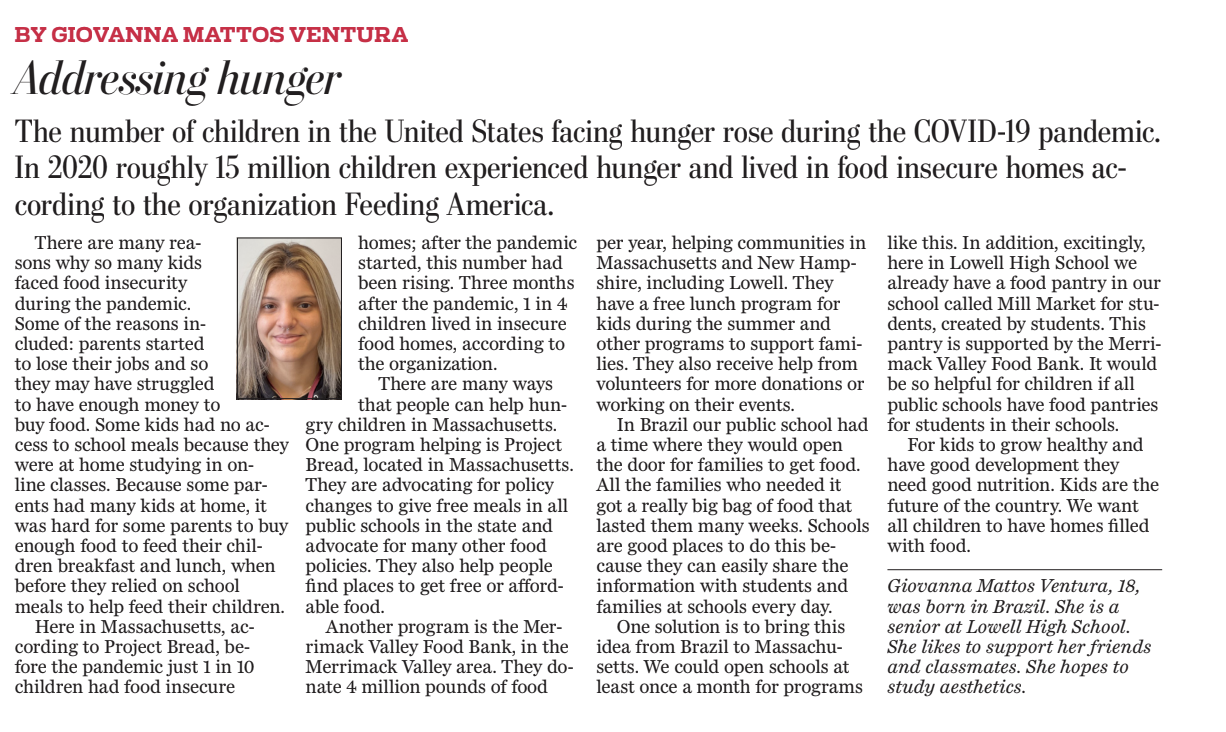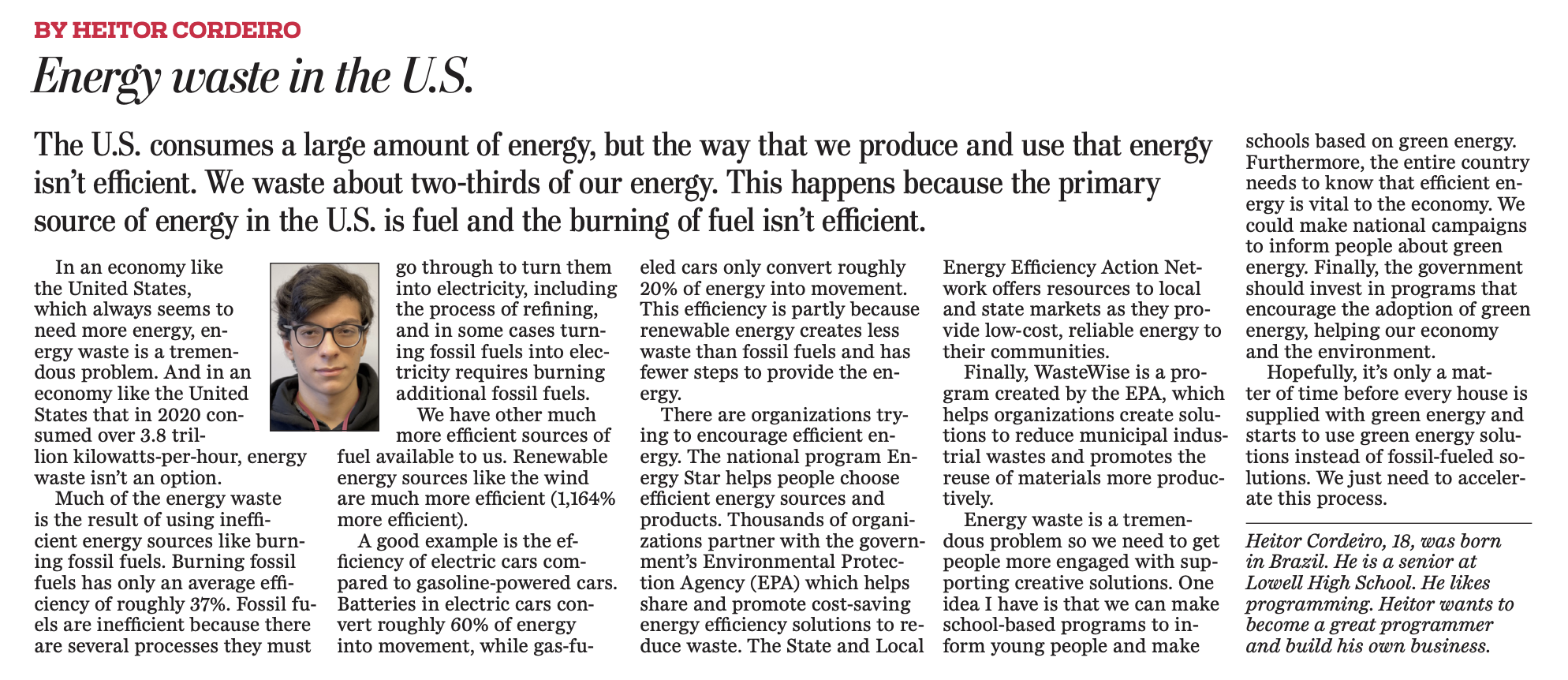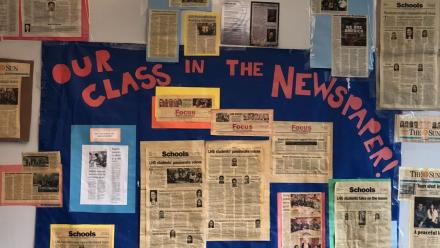Persuasive and Compelling Student Op-eds
“I’m finished!” declared one of my students. He had just turned in his first draft of his Op-ed.We were in the midst of our final project for our unit studying the Progressive Movement of the late 1800’s and early 1900s. We had read excerpts from Upton Sinclair’s The Jungle;listened to the stories of suffragettes: Frances Ellen Watkins Harper, Zitkála-Šá, Mabel Ping-Hua Lee, Susan B Anthony, Jovita Idár; compared and contrasted speeches by W. E. B. Dubois and Booker T. Washington; and examined the photographs of Lewis Hines and Jacob Riis. For our final project I connect the past to the present, asking my students to, like those who came before them, advocate for issues they care about in their community today.I teach my students to write persuasive and compelling Op-eds.

Working Through The Process
Over weeks each student chooses and researches a topic: teen vaping in our school, deforestation in Brazil, teen bullying in the US, girls education in Afghanistan. Then they set to crafting their arguments, laying out supporting research, spotlighting promising policies or programs, and presenting policy solutions and recommendations. Then comes the iteration.
Iteration creates space for students to hone their craft. It teaches skills in grit and problem solving, it teaches patience and precision.
Ask engineers and chefs, coders and writers, lawyers and teachers –iteration is an essential element of their work. They know that first drafts are just that: a starting place and that great final products are the results of multiple iterations, revisions, tweaks.
When I was a student, rarely was I asked to iterate on an assignment—to take a piece of writing and dwell over the word choices and sentence structures, to make draft, after draft, after draft so that the writing and the arguments went from okay to good to great.
For my recent immigrant students, all still practicing and developing their English skills, iteration provides us the time and space to grapple with the nuance of sentence structures and word choice.
Classroom Snapshot
After my student tackled his first round of edits he once more proudly declared himself done. I smiled, conducted another round of edits and handed it back. “It’s wrong?!” He asked startled. “It’s not about right or wrong,” I responded. “It just can be stronger.” He nodded a little hesitant before diving once more into his words.It was in our fifth round of edits that a transformation took place. “Ms. Lander,” he called from across the classroom as students around him typed and researched. “I just turned in my next draft, can you take a look and send me more edits!In the end, he and his classmates made upwards of eight rounds of edits on their Op-eds. In a few weeks our local city newspaper will be publishing a selection of their powerful pieces for our community to read and learn from.
Tips For Success
Models of Excellence: We begin the Op-ed project by studying the published Op-eds of former students. Having strong models allows my students opportunities to see concretely different approaches of making and sharing an argument and using models from former students creates opportunities to position young people and near-peers as teachers in our classroom. When setting out on a writing project, can you provide your students with models of excellence that you can analyze together, looking at word choices and sentence structures? This strategy can be particularly helpful to young people who might be unsure of how to begin.
Creating time for iteration: As teachers, our curriculums are often jam-packed, scheduled tight. However, building in time to focus on fewer writing assignments over an extended period of time allows for students to sharpen their writing.
Opportunities to showcase student work in the community: Does your school or city have a newspaper, newsletter, or blog that would consider publishing selections of your students’ writing? Creating opportunities for students to share their writing publicly in the community carries many lessons. It shows our students that their voices are powerful and that they can be and are teachers in our communities. It also can elevate the work in the classroom. My students come in early and stay late to work on many rounds of edits, they commit their time and their heart to their writing, knowing that their words will be read not just by me, but by members of their community.


